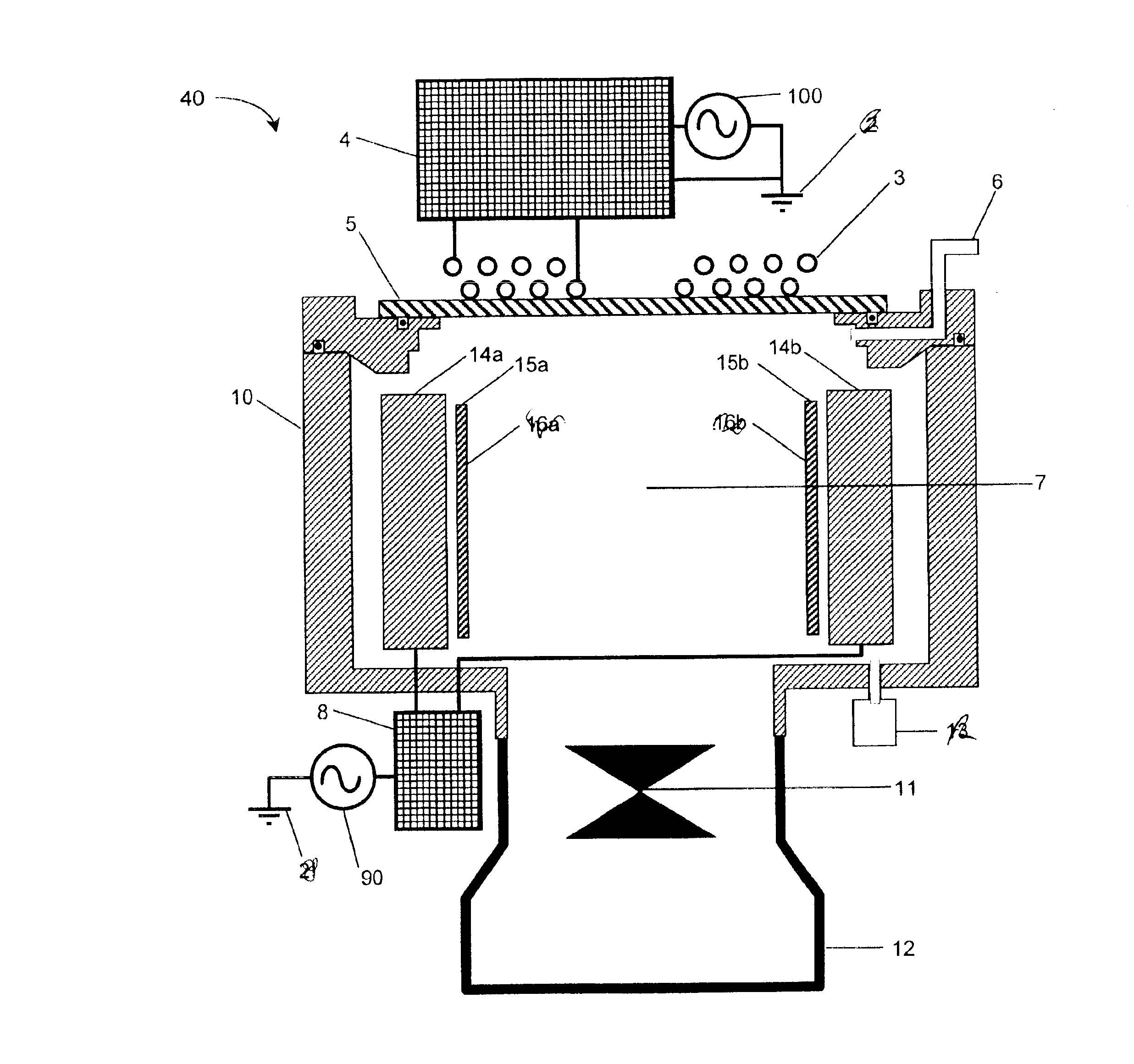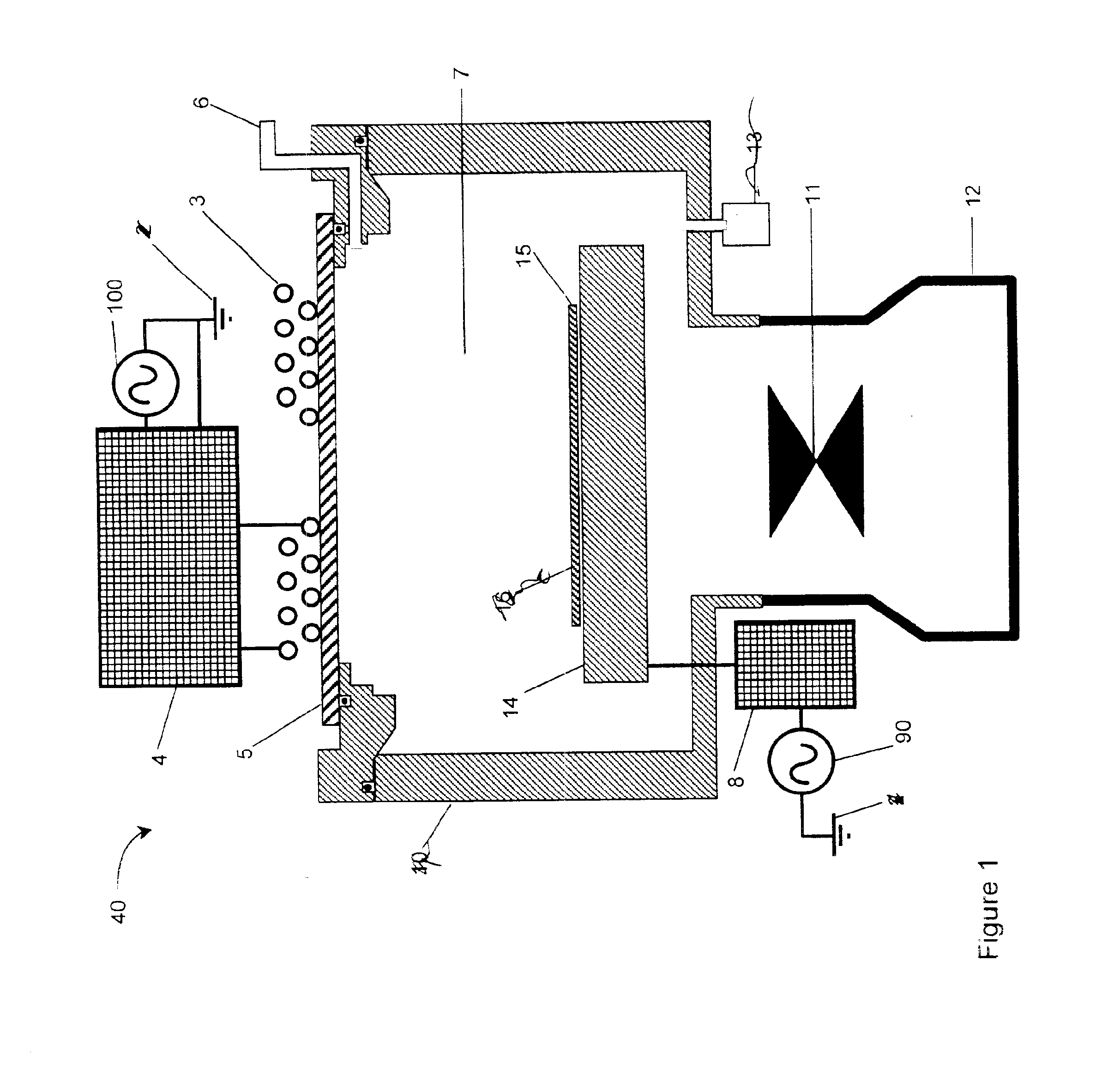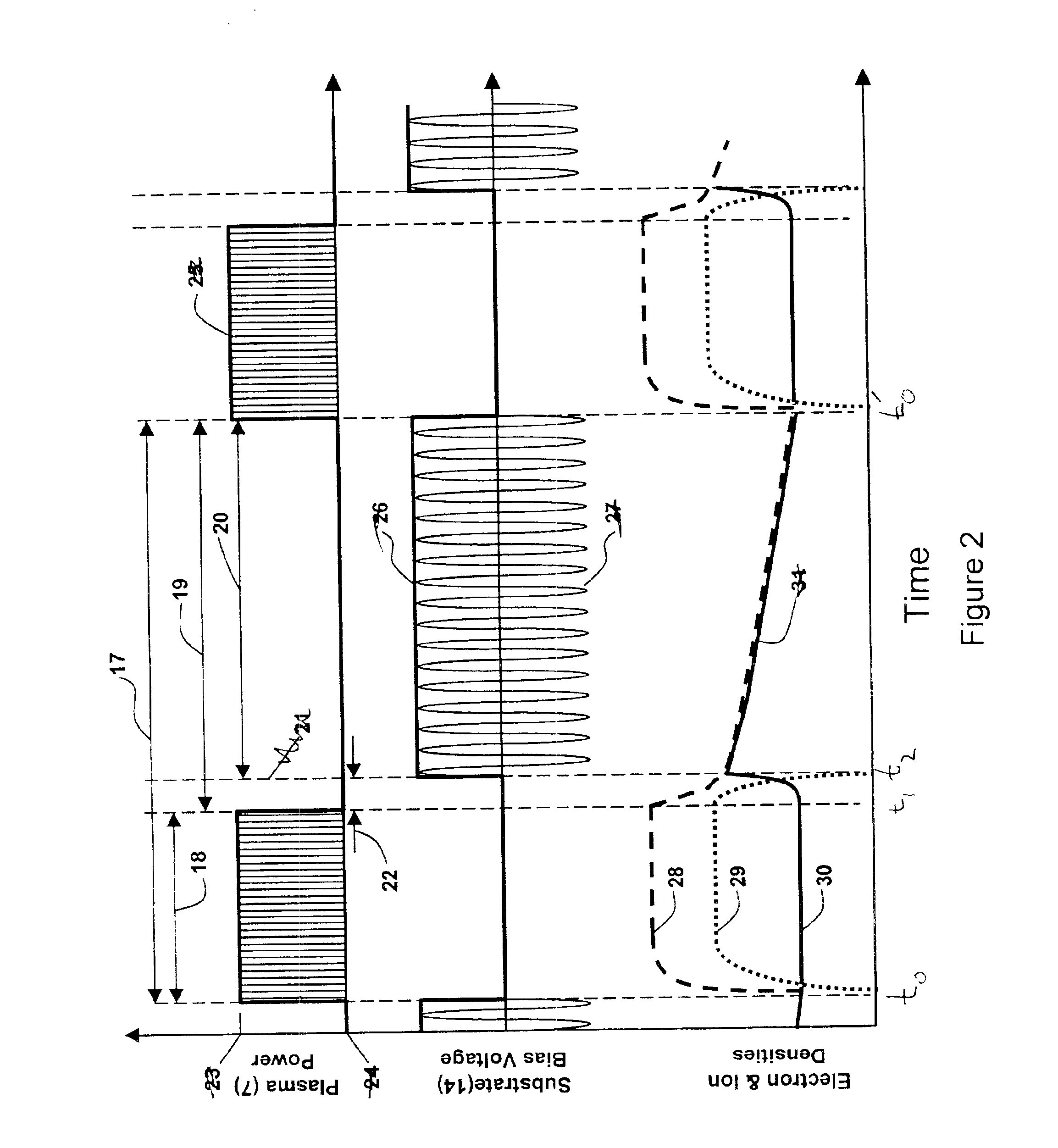Ion-Ion plasma processing with bias modulation synchronized to time-modulated discharges
a technology of ion-ion plasma and bias modulation, which is applied in the field of plasma processing methods and systems, can solve the problems of difficult to maintain plasma without electrons, difficult to couple power into the plasma, and inability to generate useful electron-free ion-ion plasmas directly, etc., and achieves the effect of reducing the risk of charging up and complete control of ion bombardment energy
- Summary
- Abstract
- Description
- Claims
- Application Information
AI Technical Summary
Benefits of technology
Problems solved by technology
Method used
Image
Examples
Embodiment Construction
The numerous innovative teachings of the present application will be described with particular reference to the presently preferred embodiment (by way of example, and not of limitation). The following description is intended to enable any person skilled in the art to make and use the invention. Any descriptions of specific applications are provided only as examples. Various modifications to the preferred embodiment will be readily apparent to those skilled in the art and the generic principles described herein may be applied to other embodiments and / or applications without departing from the scope of the invention.
Aspects of the present invention provide an improved plasma processing method that, in various embodiments, provide one or more of the following advantages: elimination of substrate charging during processing; improved control over ion energies; the capability to alternate positive-ion and negative-ion bombardment of a substrate; the capability to control surface chemistry...
PUM
| Property | Measurement | Unit |
|---|---|---|
| Fraction | aaaaa | aaaaa |
| Fraction | aaaaa | aaaaa |
| Power | aaaaa | aaaaa |
Abstract
Description
Claims
Application Information
 Login to View More
Login to View More - R&D
- Intellectual Property
- Life Sciences
- Materials
- Tech Scout
- Unparalleled Data Quality
- Higher Quality Content
- 60% Fewer Hallucinations
Browse by: Latest US Patents, China's latest patents, Technical Efficacy Thesaurus, Application Domain, Technology Topic, Popular Technical Reports.
© 2025 PatSnap. All rights reserved.Legal|Privacy policy|Modern Slavery Act Transparency Statement|Sitemap|About US| Contact US: help@patsnap.com



